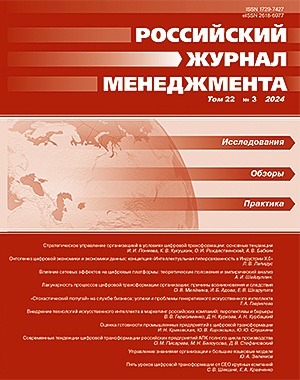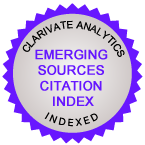Lacunarity of digital transformation processes of an organization: Causes and effects
DOI:
https://doi.org/10.21638/spbu18.2024.304Abstract
Purpose: to explore the nature of lacunas in the process of digital transformation of an organization, their localization and elimination.
Metodology: theoretical and empirical approach based on the methods of analysis and synthesis to determine the essence and factors of lacunarity of digitalization was used.
Findings: the study (1) revealed the influence of subjectivity on the digital transformation performance of an organization; (2) substantiated the importance of digital transformation; (3) analyzed the reasons for the actor’s inattention to digitalization processes; (4) investigated the nature of the lacunarity of digitalization; (5) identified the role structure and multi-directionality of the value guidelines of actors, and (6) determined the degree and forms of its display in the processes of digital transformation of organizations.
Originality and contribution: the paper proposes the author’s definition of digitalization lacunas The emphasis is given to organizational and communicational lacunas. Their influence on the processes of digital transformation of an organization is analyzed.
Keywords:
digital transformation of organizations, digitalization gaps, elimination of gaps, subjectivity of actors, role structure of actors
Downloads
References
References in Latin Alphabet
Translation of references in Russian into English
Downloads
Published
How to Cite
Issue
Section
License
Articles of the Russian Management Journal are open access distributed under the terms of the License Agreement with Saint Petersburg State University, which permits to the authors unrestricted distribution and self-archiving free of charge.





